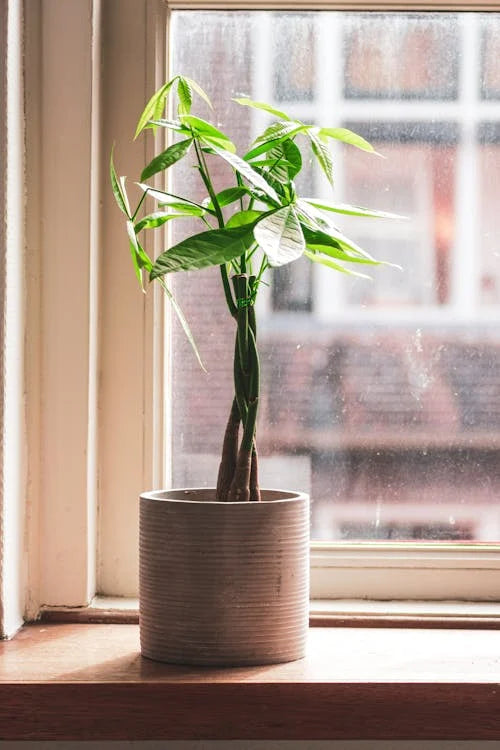
Background and history of the Pachira (Money Tree)
Share
The Pachira Aquatica , as the Money Tree is officially called, has a fascinating background and has become one of the most symbolic houseplants over the years. Discover everything about the origin, symbolism and popularity of this special plant here.
Origin and natural habitat
The Pachira originates from the tropical swamps of Central and South America. In the wild it often grows along rivers and can reach a height of up to 18 meters. Its ability to store water in its trunk makes it resistant to dry periods.
Symbolism and meaning
The Pachira is often associated with happiness, wealth and financial prosperity. According to Feng Shui, it brings positive energy into the home and is therefore called the Money Tree. The braided trunk symbolizes unity and strength, while the five leaves per stem represent the five elements: wood, fire, earth, metal and water.
From nature to interior
The Pachira became popular as a houseplant in the 1980s, especially in Asian countries. The braided trunk, which is often shaped by hand while the plant is young, adds a unique decorative value. Since then, it has been loved by plant lovers worldwide.
Interesting facts
• In its natural environment, the Pachira produces large, edible fruits that taste like peanuts.
• It is often given as a gift because of its association with luck and prosperity.
• The Pachira is one of the few plants that offers both a tropical look and easy maintenance.
With its rich history and profound symbolism, the Pachira is more than just a plant; it is a living source of happiness and inspiration. Add this unique plant to your home and enjoy its beauty and positive energy.
